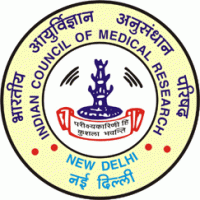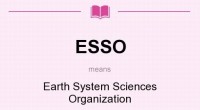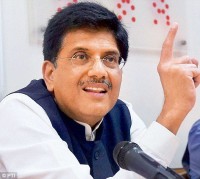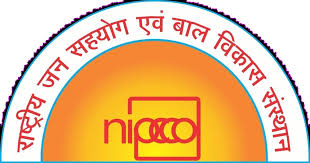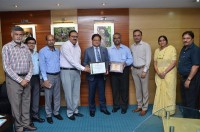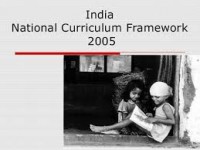The Government of India, through regular Review Meetings, has been constantly monitoring the action taken by investigating and enforcement agencies for violations of law, criminal offences and default in payments to investors on the platform of National Spot Exchange Limited (NSEL). Investigations and other enforcement measures are being taken by the Economic Offences Wing (EOW), Mumbai Police, Enforcement Directorate (ED), Securities and Exchange Board of India (SEBI), Financial Intelligence Unit–India (FIU-IND) and Ministry of Corporate Affairs (MCA). So far, twelve such meetings have taken place.
The last such Review Meeting was held on 19.7.2016 under the Chairmanship of Shri Shaktikanta Das, Secretary, Department of Economic Affairs (DEA), Ministry of Finance. The previous Review Meeting was held on 6th June, 2016. The latest status with regard to some of the important aspects of the case and the key decisions taken in the Review Meeting are as under: • A designated Judge of the City Civil Court and Additional Sessions Judge, Greater Bombay has been nominated to try various cases arising-out of the NSEL payment crisis, in addition to the other assigned matters, by giving priority to NSEL related cases. Meanwhile, efforts are being made to set-up an independent Court to hear NSEL related cases on exclusive basis.
The Government of Maharashtra has taken action for strengthening of EOW, Mumbai Police; augmenting the number of Designated Courts under the Maharashtra Protection of Interest of Depositors (in Financial Establishments) Act, 1999 (MPID Act); and deployment of full time Competent Authorities under the MPID Act for dealing exclusively with NSEL related work so that investors are repaid their lost investments in the contracts traded on NSEL quickly. The Government of Maharashtra was requested to expedite these measures so that the defaulters could be brought to book quickly; money could be realised from the sale of attached assets and consequently be returned to investors of NSEL, who have suffered losses in the payment crisis. • The Government of Maharashtra has already initiated action to auction the assets attached by EOW, Mumbai Police. So far, 831 properties worth Rs.7063 crore have been attached by EOW, Mumbai Police under MPID Act, out of which, attachment of 711 properties worth Rs. 6115 crore have been notified in the Gazette of the Government of Maharashtra. EOW, Mumbai Police was requested to expedite realisation of value of attached assets, as per the procedure, quickly. • Government of Maharashtra was also requested to consider appropriate action in respect of about Rs.18 crore of attached assets, lying in the accounts of Competent Authority and the Designated Court under MPID Act, so that it could be refunded to NSEL investors quickly, in accordance with the procedure laid down for the purpose. • Ministry of Corporate Affairs (MCA) had issued draft order for the merger / amalgamation of NSEL with Financial Technologies (India) Limited (FTIL) in public interest. Hon’ble Bombay High Court had granted extension of time up to 15.02.2016 to MCA for taking final view on the draft order of the amalgamation. MCA issued the final Order on 12.2.2016 for the merger of NSEL with FTIL. Hon’ble Bombay High Court, however, has restrained the Government from notifying the final Order dated 12.02.2016 in the Official Gazette. In the review meeting, MCA was advised to pursue the case expeditiously for effecting the merger at the earliest. Further, MCA was also advised to strongly defend the efforts of the Government to introduce management and governance changes in FTIL, which are under legal challenge in NCLT and Hon’ble Madras High Court.
ED had filed prosecution complaint before the City Civil Court and Additional Sessions Judge, Greater Bombay against NSEL and 67 other accused persons under the Prevention of Money Laundering Act (PMLA), 2002. The prosecution complaint details money trail amounting to Rs.3721.22 crore. It was advised that the ED would expedite action for completing all the procedural formalities necessary for recovery of the investment and conviction of the offenders concerned. •
FIU-IND passed an Order on 04.11.2015 under section 13 of the PMLA imposing a penalty of Rs.1.66 crore on the NSEL for non-compliance of the Act. NSEL has gone in appeal in the PMLA Tribunal against the Order passed by Director, FIU-IND. FIU-IND was advised that action may be taken to pursue the case vigorously for realising the penalty at the earliest. FIU-IND has also issued show-cause notices to Directors of NSEL for violation of PMLA. • As a follow-up of an earlier decision, SEBI conducted detailed inspection of books of five brokers of the erstwhile Forward Markets Commission, whose names figure in the list of offenders received from EOW, Mumbai Police. The audit has since been completed and SEBI is examining the report. SEBI was advised to complete the examination quickly and thereafter initiate necessary action against violation / offences, if any.


